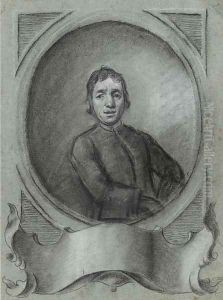Bartolomeo Nazzari Paintings
Bartolomeo Nazzari was an Italian painter, born in 1699 in Clusone, near Bergamo, Lombardy. He is often remembered for his significant contributions to the Baroque period of painting, a style known for its dramatic use of color, light, and shadow. Nazzari showed a remarkable talent for painting from an early age, which led him to pursue formal training in the arts. He studied under prominent artists of his time, though much of his early education and specific mentors remain less documented compared to other artists of his caliber.
Nazzari's work primarily consisted of religious themes, portraits, and historical scenes, embodying the grandeur and emotion typical of the Baroque style. His ability to portray deep emotional expressions and the intricate details of his subjects' attire and surroundings gained him considerable recognition. Although Nazzari worked in various cities across Italy, much of his life and career were centered in Bergamo and Venice, where he contributed several significant works to churches and public buildings.
Throughout his career, Nazzari also engaged in the creation of altarpieces, a common practice among artists of his time, which allowed him to explore and express his religious devotion and understanding of biblical narratives through his art. His altarpieces are noted for their dynamic compositions and the skillful use of light to highlight the focal points of the scenes.
Despite his success, Bartolomeo Nazzari remains a somewhat lesser-known figure in the art historical canon, overshadowed by contemporaries like Tiepolo and Canaletto. However, his works continue to be studied and appreciated for their contribution to the development of Italian Baroque painting. Nazzari's legacy lies in his mastery of portrait painting and his ability to imbue his religious and historical scenes with a vivid sense of life and emotion. He passed away in 1758, leaving behind a body of work that continues to be admired for its artistic quality and emotional depth.
